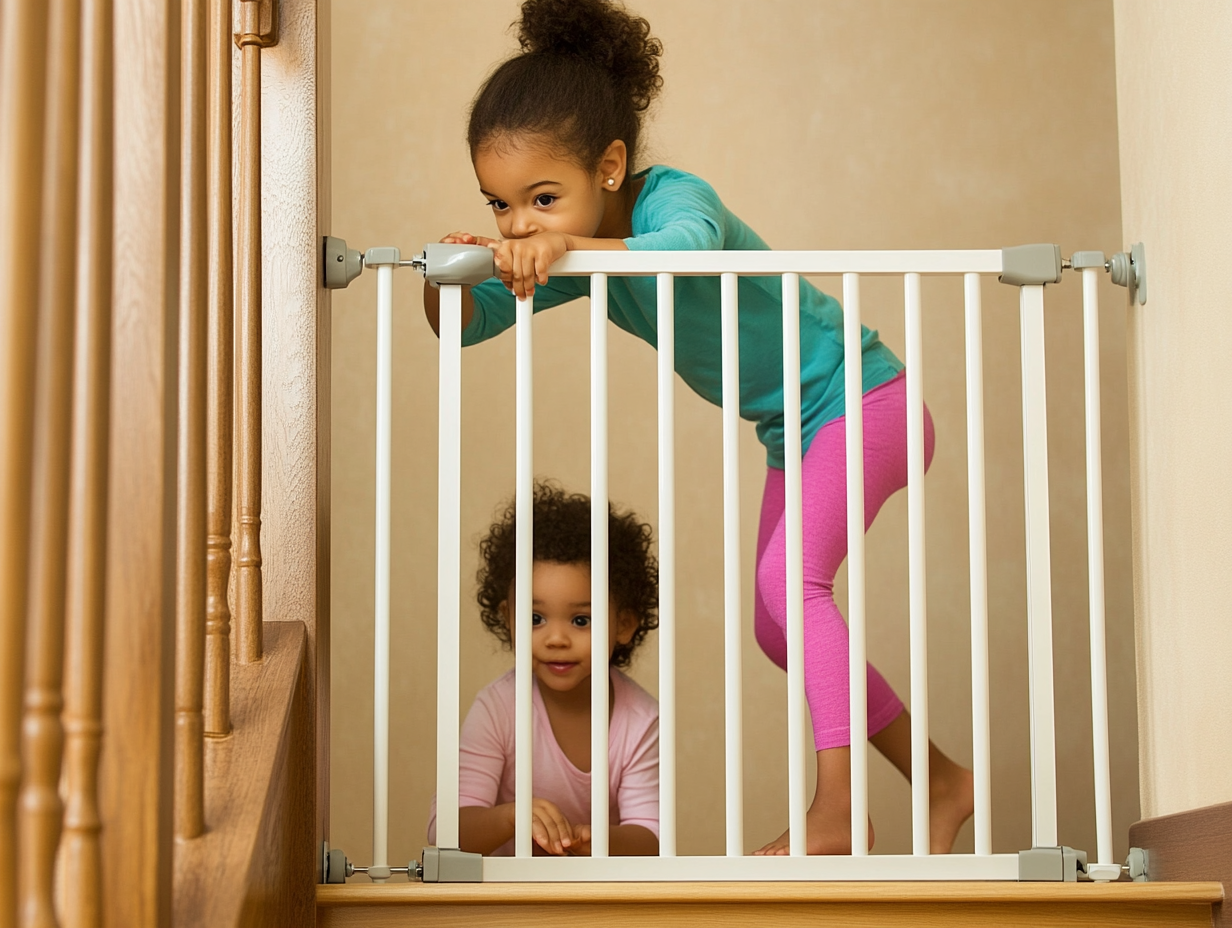Step-by-Step Guide to Babyproofing a House

The Importance of Babyproofing
Welcoming a baby into your home is a life-changing experience filled with joy and wonder. Along with that happiness, however, comes the weighty responsibility of ensuring their safety. Babies are naturally curious, eager to touch, grab, and explore every nook and cranny. While this curiosity is essential for their growth, it can also lead them into dangerous situations.
Babyproofing isn’t simply about installing locks or adding outlet covers. It’s about creating an environment where your child can explore freely, discovering the world around them without the constant shadow of risk. From sharp corners to hidden hazards in cabinets, the everyday household is filled with potential dangers. Babyproofing transforms your home into a sanctuary, giving you peace of mind and allowing your child to thrive in safety.
The Right Time to Start Babyproofing
Knowing when to begin babyproofing can make all the difference. Experts agree that the process should ideally start when your baby begins to crawl, usually around 6 to 10 months of age. At this stage, mobility introduces new challenges, as previously out-of-reach areas suddenly become accessible.
Proactive preparation ensures your home is ready for these milestones. Waiting until your baby has already started exploring can leave you scrambling to catch up. By taking action early, you create a safe, welcoming space for their growing independence. Whether it’s securing cabinets, covering sharp edges, or installing baby gates, starting at the right time allows you to stay ahead of their curiosity.
Assessing Your Home for Hazards
Taking a Room-by-Room Approach
Ensuring your home is safe for a curious child starts with a thorough assessment. A room-by-room inspection allows you to identify potential dangers in spaces your child will frequent most, such as the living room, kitchen, and nursery.
In the living room, examine furniture for sharp edges and ensure heavy items like bookshelves or televisions are securely anchored. Loose cords from blinds or electronics should be tied up or hidden to avoid entanglement. Low-level tables and decorative objects should be moved or padded.
In the kitchen, focus on cabinets, drawers, and countertops. Keep sharp utensils, cleaning products, and small appliances out of reach or locked away. Don’t overlook the danger posed by hot surfaces or dangling appliance cords.
In the nursery, check cribs and changing tables for stability. Ensure there are no loose parts or gaps where tiny fingers might get caught. Any decorations, like wall hangings or mobiles, should be securely fastened.
- Inspect each room systematically to identify hazards.
- Focus on areas your child can easily reach or interact with.
- Make note of items that require immediate adjustments or relocation.
Addressing Common Household Hazards
Certain risks are prevalent in almost every home. Cleaning supplies under the sink are a prime example. While convenient for adults, these chemicals pose serious threats to children and should be stored in locked cabinets or moved to higher shelves.
- Exposed electrical outlets are another frequent hazard. These can easily be covered with outlet plugs or safety covers, reducing the risk of shocks or burns.
- Low shelves often house fragile or heavy items that can topple or break if a child pulls at them. Relocate these items or install magnetic cabinet locks to restrict access.
Safeguarding Cabinets and Drawers
Adding Locks and Latches for Safety
For curious toddlers, cabinets and drawers are irresistible. They hold hidden treasures like shiny pots, colorful boxes, and intriguing gadgets. However, many of these items can be hazardous, making securing these spaces a top priority. Installing childproof locks or latches is an effective way to prevent access.
Magnetic locks are an excellent choice for modern households. Installed inside cabinets, they remain invisible to the eye but secure doors firmly. A magnetic key is required to open them, ensuring only adults can access the contents. For a quicker solution, adhesive latches provide strong resistance and are easy to install without tools.
- Use magnetic locks for a discreet and secure option.
- Opt for adhesive latches for quick installation in rental spaces.
- Test all locks after installation to ensure they withstand a determined toddler’s efforts.
Storing Hazardous Items Safely
Even with locks and latches in place, organizing potentially dangerous items reduces the risk of accidents. Knives, cleaning supplies, and medications should be stored in higher cabinets, well out of reach of little hands. These items should never be left in lower cabinets, even with locks, as accidents can happen when locks fail or are mistakenly left unlocked.
Group similar hazardous items together in designated areas, such as a locked kitchen cabinet for cleaning products or a high bathroom shelf for medications. This organization minimizes the chance of accidental exposure and makes it easier for adults to locate these items quickly.
By combining effective locks with thoughtful organization, you create a safe and functional home environment that allows your child to explore without unnecessary risk.
Ensuring Electrical Safety at Home
Safeguarding Outlets and Power Strips
Electrical outlets and power strips are common fixtures in every home, but for curious toddlers, they can become dangerous attractions. Protecting these access points is essential to creating a safe environment. Outlet covers are a simple yet effective solution. They prevent small fingers from entering sockets while maintaining an unobtrusive appearance. Look for tamper-resistant covers that are easy for adults to remove but impossible for children to manipulate.
Power strips present their own challenges. Specialized covers are available to encase the entire strip, preventing curious hands from pulling at cords or pressing buttons. These covers ensure the power strip remains functional while keeping it out of reach for your little one.
- Install tamper-resistant outlet covers throughout the home.
- Use power strip covers to block access while preserving usability.
- Regularly inspect covers for wear and replace them as needed.
Organizing and Securing Cords
Loose cords and tangled wires not only look untidy but can also pose serious risks to toddlers. Tripping hazards, accidental unplugging, or even pulling heavy devices off surfaces are common dangers associated with unsecured cords. Managing these cords effectively is a crucial part of babyproofing.
Cord organizers or sleeves are excellent for bundling multiple cables together, keeping them neat and inaccessible. Velcro straps or zip ties can secure cords against walls or furniture, reducing the temptation for little hands to tug on them. When possible, tuck cords behind furniture or use adhesive cord clips to anchor them out of reach.
- Bundle cords with organizers to minimize hazards.
- Anchor loose wires to walls or furniture using Velcro or clips.
- Position cords behind heavy furniture to keep them completely inaccessible.

Making Stairs and Doorways Safe for Little Explorers
Keeping Stairs Off-Limits with Baby Gates
Stairs can be one of the most dangerous areas in your home for a curious toddler. Installing baby gates is an effective way to keep your child safe from potential falls. For maximum security, place gates at both the top and bottom of the staircase. Hardware-mounted gates are ideal for the top of stairs as they provide a sturdy, fixed barrier. Pressure-mounted gates work well for the bottom of stairs or doorways, offering flexibility and ease of installation without permanent alterations.
When selecting a baby gate, ensure it meets safety standards with no large gaps where a child’s head or limbs could get stuck. Look for gates that are easy for adults to operate but challenging for toddlers to manipulate.
- Use hardware-mounted gates for areas that require the most stability.
- Choose pressure-mounted gates for temporary or adaptable solutions.
- Regularly check the gate’s fittings to ensure they remain secure.
Securing Doors and Windows
Doors and windows can also pose risks, from pinched fingers to accidental openings. Simple tools like door stoppers and finger pinch guards are invaluable for preventing little hands from getting hurt in closing doors. These devices are easy to install and fit a wide range of door types.
Windows, particularly on upper floors, require additional attention. Install window locks or safety latches to restrict how far they can open. This precaution is essential to prevent falls or unintentional exits. For sliding windows, consider using a removable bar or wedge lock to keep them securely in place.
- Install door stoppers to prevent sudden closures and finger injuries.
- Use window locks or latches to limit openings to no more than a few inches.
- Secure sliding windows with a sturdy bar or wedge lock for added safety.
Designing a Safe Bathroom for Your Little One
Minimizing Water Risks
Water can be a hidden danger in the bathroom, especially for young children. The temptation to splash, play, or climb near water sources can quickly turn into an accident if not properly monitored. Never leave a child unattended near water, whether it's a bathtub, sink, or toilet. Babies and toddlers can easily slip into unsafe situations in mere moments.
To reduce the risk of injury, use faucet covers to soften sharp edges and create a more child-friendly environment. These simple devices not only protect against cuts but also help children avoid sudden temperature changes. Another essential safety measure is setting your water heater to a safe temperature—ideally below 120°F (49°C)—to prevent accidental scalding from hot water.
- Always supervise your child near water.
- Use faucet covers to protect against sharp edges and sudden temperature shifts.
- Set your water heater to a safe, child-friendly temperature.
Securing Toilets and Cabinets
The bathroom is filled with both water hazards and everyday items that could pose dangers to a curious child. Toilets, for example, are often overlooked but can be a significant risk. Install toilet locks to prevent access to the water, ensuring your child doesn’t fall in or explore unsanitary areas. These locks are easy to install and can be removed when your child grows older.
In addition to the toilet, bathroom cabinets often house cleaning supplies, medications, and other potentially harmful substances. Store these items out of reach, or install secure cabinet locks to prevent your child from gaining access. Whether it’s under the sink or in other easily accessible drawers, securing these areas should be a priority to ensure safety.
- Use toilet locks to prevent access to dangerous water.
- Secure bathroom cabinets with childproof locks to keep harmful items out of reach.
- Store cleaning supplies and medications in locked cabinets or high-up shelves.

Making Your Living Room Safe for Little Explorers
Securing Furniture and TVs Against Tipping
The living room, often the heart of the home, is a favorite spot for children to play and explore. However, heavy furniture and televisions can pose significant risks if not properly secured. Toddlers naturally use furniture for support as they learn to walk, which can lead to tipping accidents. Anchoring these items to the wall is a crucial step in creating a safe space.
Use anti-tip brackets or straps to firmly attach furniture like bookshelves, cabinets, and TV stands to the wall. These simple devices prevent furniture from toppling over if pulled or climbed on by a curious child. Additionally, consider placing heavier items on lower shelves to keep the center of gravity stable.
- Anchor bookshelves, cabinets, and other heavy furniture to the wall.
- Use anti-tip straps to secure televisions and prevent tipping accidents.
- Arrange heavier items on lower shelves to improve stability.
Eliminating Choking Hazards from Reach
Young children explore their world with their hands—and often their mouths—making small objects in the living room potential choking hazards. Conduct a thorough inspection of the room to identify and remove any items that could fit into a child’s mouth.
Toys, decorations, and everyday items like coins, buttons, or batteries should either be relocated to higher shelves or stored in childproof containers. Pay special attention to items that can be overlooked, such as small parts from electronics or stray pieces from board games. Rugs and under furniture are also areas to check for hidden hazards.
- Inspect toys, decorations, and everyday objects for choking risks.
- Keep coins, batteries, and other small items in secure, high storage.
- Regularly clean under furniture and rugs to remove overlooked hazards.
Keeping Your Home Safe as Your Baby Grows
Conducting Routine Safety Inspections
Babyproofing isn’t something you do once and forget. Locks, latches, and safety devices can wear out or become less effective over time, particularly in high-traffic areas. Regularly inspecting these features ensures they remain functional and secure.
Take a few minutes every month to check the condition of outlet covers, cabinet locks, and baby gates. Pay attention to adhesive-based safety devices, as they may lose their stickiness and need replacing. Hardware-mounted options should be tightened periodically to maintain their stability.
Adjusting to Your Child’s New Skills
As children grow, their abilities evolve—what was once out of reach may suddenly become accessible. A toddler who couldn’t climb last month might now be scaling furniture, and those higher shelves you thought were safe may no longer be. Adapting your babyproofing measures to match your child’s development is essential.
Periodically reevaluate your home from your child’s perspective. Lower yourself to their eye level and identify new hazards that may have emerged. Move dangerous items even higher or use more robust safety measures as necessary.
A Nurturing, Secure Home for Growth
By staying vigilant and adapting your babyproofing strategies, you create an environment where your child can explore freely while staying safe. Regular maintenance not only safeguards your little one but also provides you with peace of mind. The effort is small, but the impact is profound—a home that’s both a sanctuary and a playground for your growing child.

